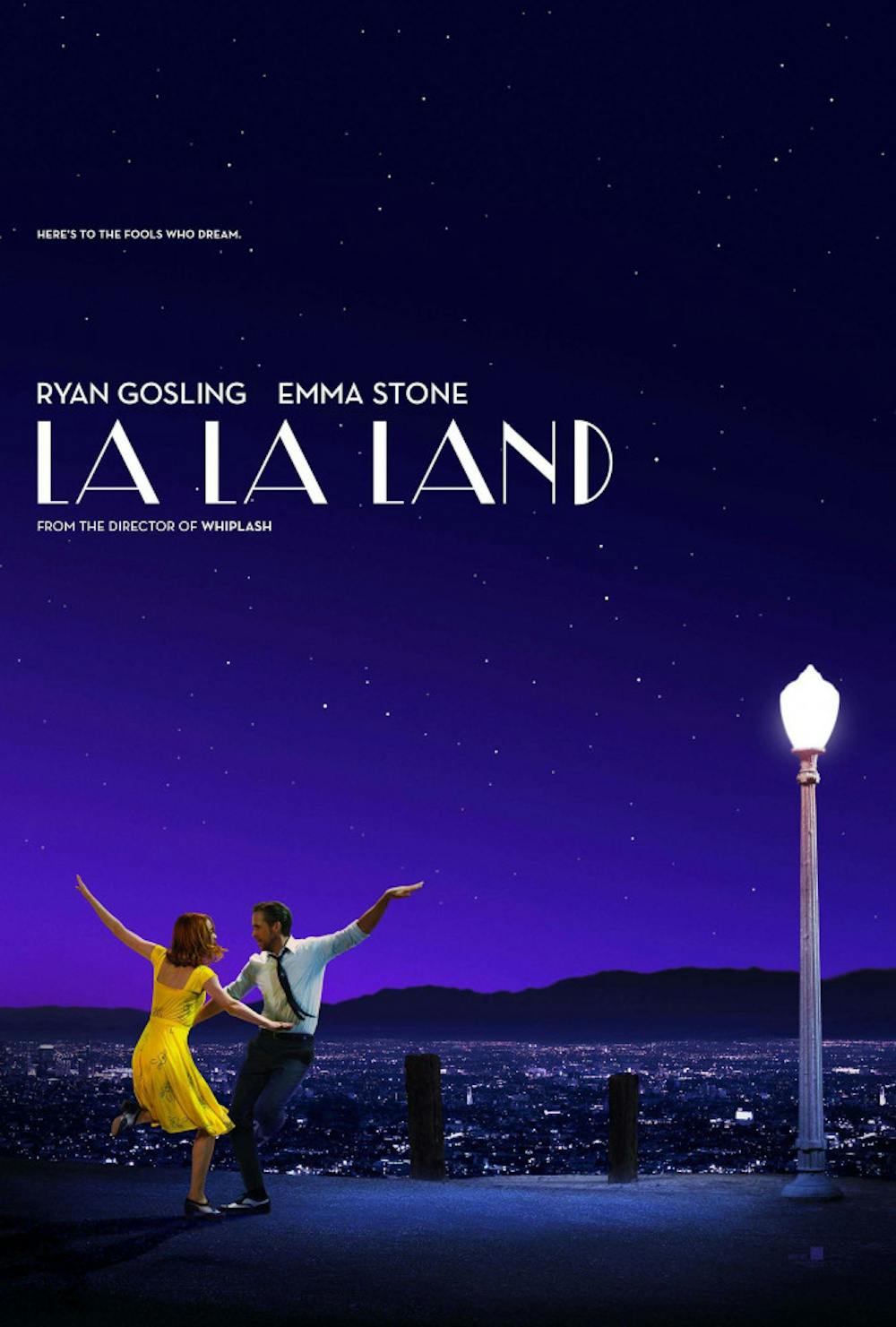Inspired by Hollywood’s Golden Era, director Damien Chazelle channels classic movie musicals in a modern day romance starring Emma Stone and Ryan Gosling.
Like its execution, an expression of old and new, “La La Land” manages to find balance by thoroughly exploring the two sides of life. It celebrates dreamers’ optimism while exposing the cost of such dreams. It romanticizes Los Angeles while acknowledging the city’s downfalls. It shows what true love looks like, while refusing to shy away from what it takes to maintain such a love.
Brimming with nostalgia and freshness, “La La Land” is unlike any other movie in theaters.
For all the well-deserved acclaim, the film’s unabashed musical outbursts can startle the typical moviegoer. The film opens on an L.A. traffic jam which seamlessly transitions from an everyday scene to a huge musical number. It is in those first few minutes that audiences are offered a chance to acclimate to a world where jazz is the best way to express emotion and dance the most effective way to convey interaction.
Only as the opening sequences end do the two main characters, Mia (Stone) and Sebastian (Gosling), meet. The entire film is an ode to those willing and crazy enough to pursue their passions fully or, as the tagline reads, “Here’s to the fools who dream.”
Keeping with that theme, Mia is a struggling actress working as a barista, fully confident her big break is just around the corner. Every bit her opposite, Sebastian is a jazz pianist playing music he doesn’t like for a man he can’t stand to save money for a jazz club he wants to open one day.
Just as the old saying goes, the two opposites attract, and what unfolds is one of the best romances in recent years.
As evident in their past collaborations and this film, Stone and Gosling have unbelievable on-screen chemistry. The superior acting in this film has awarded both leads serious recognition in the time since its release. Recently, both Stone and Gosling won Golden Globes for their performances.
Stone has simply never been better. Whether she is goofily dancing with friends on the way to a party or singing her heart out in her final number “Audition,” Stone roots Mia in a sense of surrealism that doesn’t miss a single heart-wrenching emotion.
Gosling is much more understated, but by no means gives a worse performance. Reviving the old Hollywood idea of a “triple threat,” he sings, dances, and acts beautifully throughout the film.
The end result is a film which draws every possible emotion from the audience. Sure, the cinematography is beautiful, the music impeccable, and the acting superb, but the most significant achievement of “La La Land” is its ability to use the qualities so successful in movies past to relate to an audience today.
Whether it’s joy, heartache, or something in between, the film forces people to feel. “La La Land” is a must-see for anyone looking for a movie that will not just entertain, but move them.
“La La Land” is a new movie with an old soul

La La Land’s playful blend of old and new makes it obvious why the film has achieved critical acclaim.




